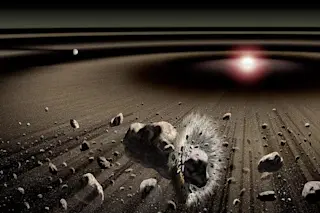During a scene in the movie Alien, crew members are startled to see a fist-size hole in their spaceship’s ceiling, still sizzling from some substance that has just burned clear through the metal. That metal-eating stuff is, of course, the blood from the alien. I have met the closest thing there is to that alien’s blood. It came in a small plastic bottle, and it was eating its way through my patient’s hand. On an otherwise ordinary evening, William Turner, a 37-year-old truck driver, noticed a paint stain on his coat. Looking for something to remove the stain, he wandered into the basement of his rented house and rummaged around. At the back of a dusty shelf stood a small bottle labeled Industrial Laundry Rust Remover. The side of the bottle carried the warning CAUTION: DO NOT USE WITHOUT GLOVES. William didn’t read that bit, however, and he removed the ...
An Invisible Fire
Hydrofluoric acid burns can cause severe tissue damage with minimal skin signs. Learn about the effective treatments and precautions.
More on Discover
Stay Curious
SubscribeTo The Magazine
Save up to 40% off the cover price when you subscribe to Discover magazine.
Subscribe












